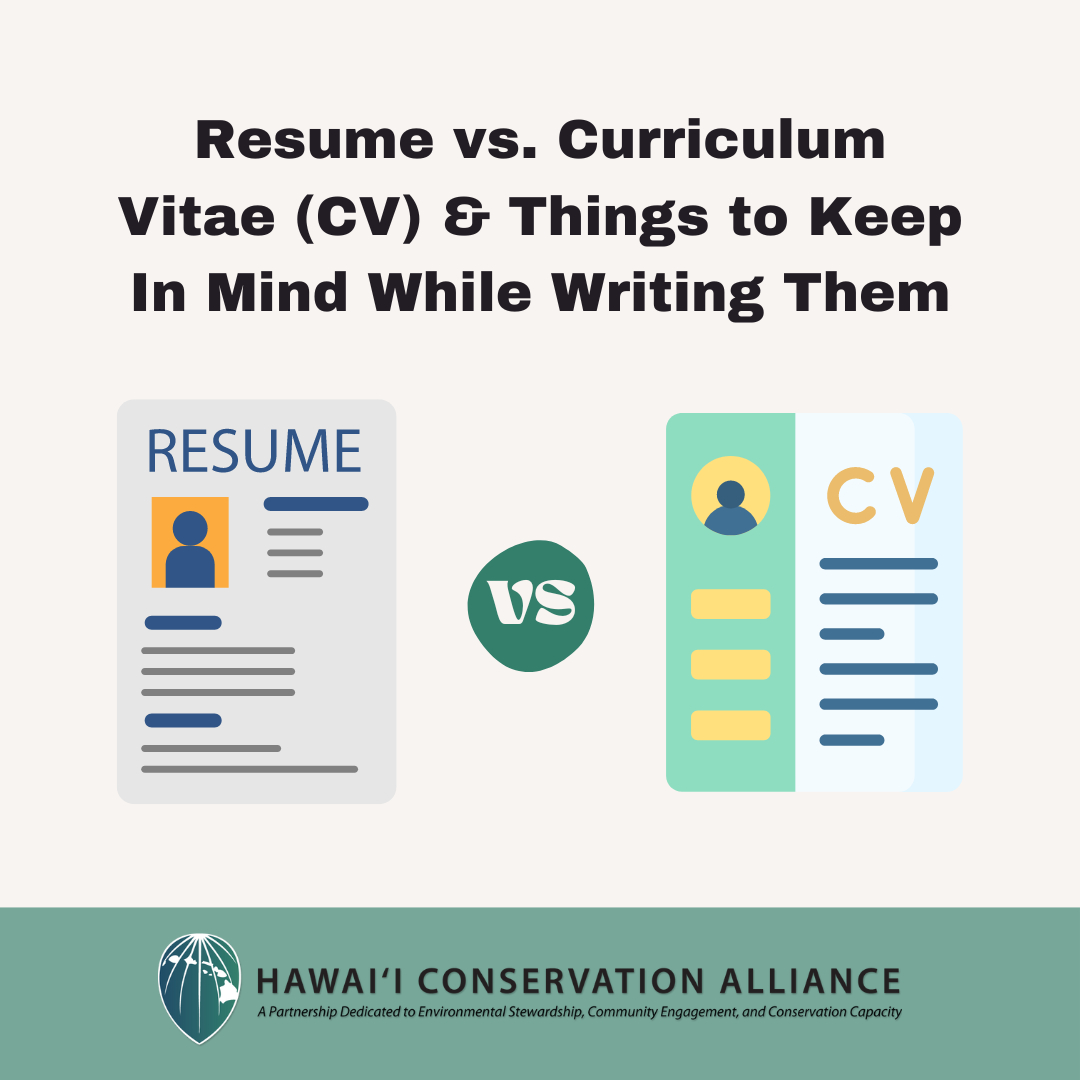Career Resources


Resume vs. Curriculum Vitae (CV) & Things to Keep In Mind While Writing Them
Below is a guide on the differences between a CV and Resume, and when you want to prepare either one.
The Major Differences Between a Resume and Curriculum Vitae (CV)[1]
Resume
- Typically 1 page, no more than 2 pages
- Highlights your qualifications and relevant employment experience for the opportunity you are applying to
Curriculum Vitae (CV)
- An in-depth document that can be laid out over two or more pages
- Provides a high level of detail about your achievements, education, research, publications, awards, honors etc.
Points to Consider While Writing your Resume/CV[2]
At entry level, your resume/CV should not exceed two pages. Those with more experience may need a longer resume/CV. This may vary depending on whether you are preparing a resume or CV (see above).
Focus it on the position that you are applying for, with key information prominent in the first half, making it clear what you can offer.
Resume/CV layout
Make sure you include your name, contact details, link to personal blog (if this is related to your field and appropriate for future employers to look at) or LinkedIn profile. Only include your LinkedIn profile if it is up-to-date and comprehensive.
- Profile/Skills Section:
- Provide a brief summary of relevant experience, key skills and/or specific qualifications. You may want to include your membership with professional bodies and environmental/community organizations.
- You can incorporate your skills within your profile, or put them in a separate “Key Skills” section.
- Work History Section:
- Preferably, this should be listed in reverse chronological order (from most recent to oldest). If you have significant volunteer experience, you can create a “Volunteer” section with your employment history in a separate section.
- When describing your role responsibilities, make sure to highlight any projects that you are involved with. Quantifying impacts, results, community engagement, monetary amounts etc. give hiring managers a better sense of the work that you have done, i.e. Raised $5,000 through a community fundraiser.
- Education/Training Section:
- Typically listed in reverse chronological order, provide the type pf degree(s) that you have obtained or will obtain in the near future, relevant qualifications and training courses. Make sure to include dates and institution details.
- Provide an overview of the relevant courses that you have taken in school to show the topics you are knowledgable about. It’s also a good idea to include field courses, practical classes, and placements that you have taken in the course of your degree.
- Only include your GPA if it is worth highlighting or is relevant to the position.
[1] https://icc.ucdavis.edu/materials/resume/resumecv.htm
[2] Guardian, “How to write a CV for the environment and sustainability sector” https://www.theguardian.com/careers/cv-for-environment-sector?j=20741&e=j.a.keaveney@kent.ac.uk&l=570_HTML&u=1103826&mid=1059027&jb=1&CMP=
